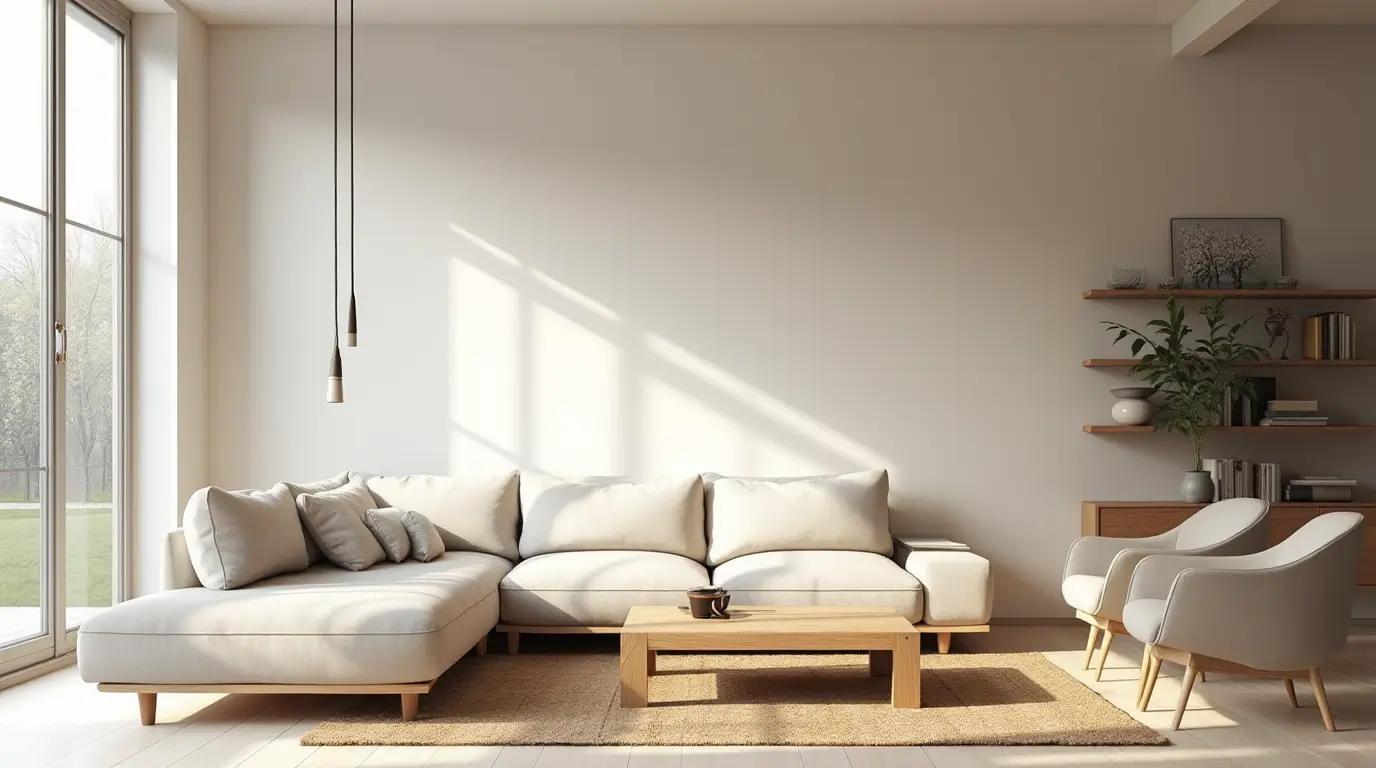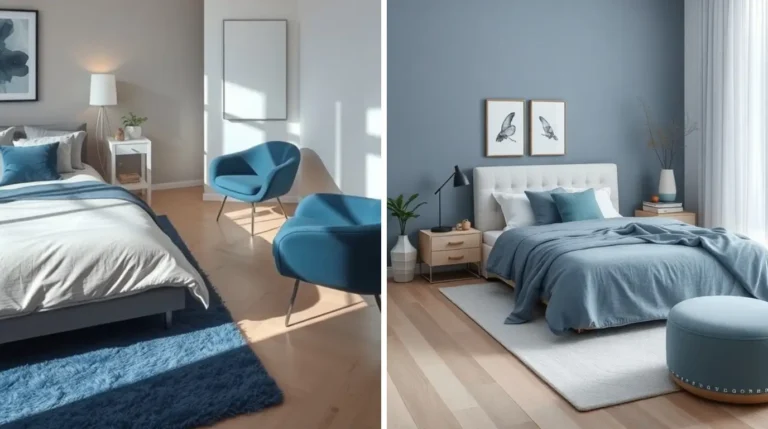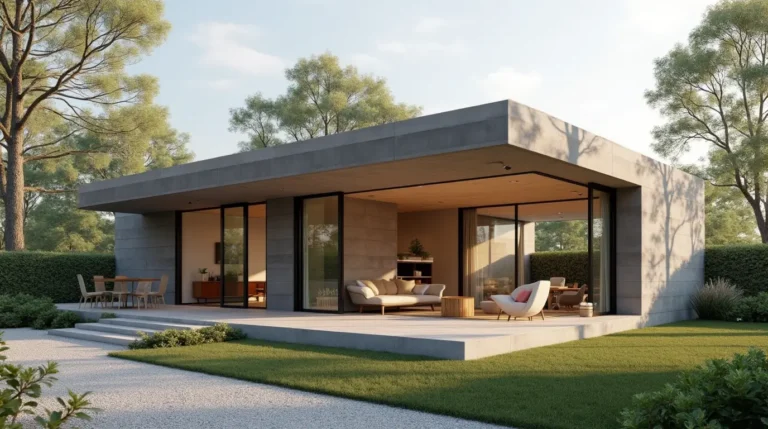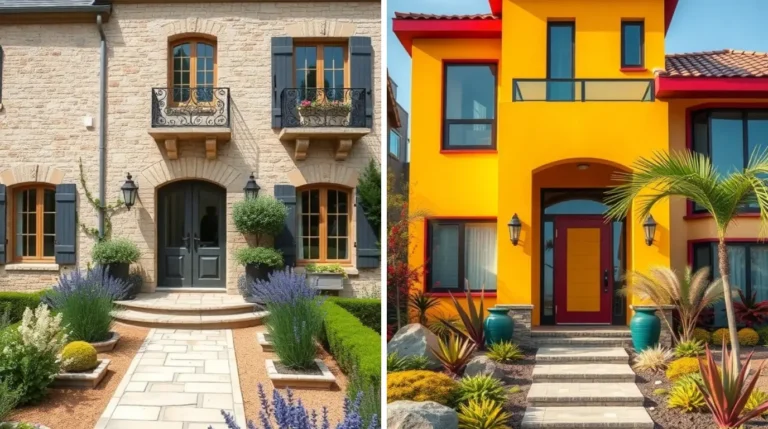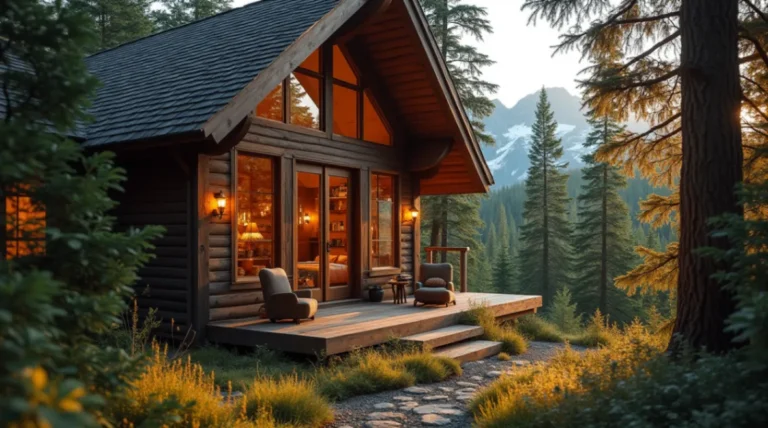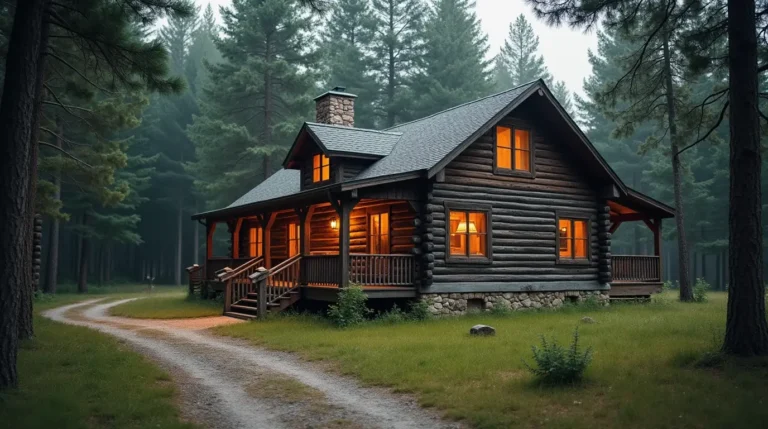Minimalist House Decor: How To Keep It Simple
Keeping your home decor simple is a popular choice. A minimalistic home looks sleek and modern. It also makes your space feel calm and clear.

We’ll look into the world of minimalist house decor. You’ll learn how to make your home simple and peaceful. We’ll talk about getting rid of clutter and picking the right furniture.
Key Takeaways
- Understand the core principles of minimalist decor
- Learn effective decluttering strategies
- Discover how to choose furniture that enhances simplicity
- Explore ways to create a serene living environment
- Find inspiration for your own minimalist home makeover
Understanding the Philosophy of Minimalist Design
Minimalist design believes that less is more. It’s about living simply and intentionally. This philosophy goes beyond looks; it’s about simplicity, function, and cutting out the unnecessary.
It teaches us to rethink our stuff and our spaces. By keeping only what’s essential, we make our homes look good and feel calm.
The Core Principles of Minimalism
Minimalist design is all about simplicity, function, and making choices. It means removing what’s not needed to show the true nature of a space or item. Every piece should have a purpose, avoiding clutter and duplication. And, we choose what we keep with care, based on need, beauty, or meaning.
| Principle | Description | Example |
|---|---|---|
| Simplicity | Eliminating unnecessary elements | Using a simple color palette |
| Functionality | Ensuring every item serves a purpose | Multi-functional furniture |
| Intentionality | Making deliberate choices about inclusions | Selecting decor with sentimental value |
Benefits of a Minimalist House
Living in a minimalist home has many perks. It reduces stress from clutter, uses space better, and saves money on quality items. Plus, it’s better for the planet, needing less to maintain and encouraging green living.

Common Misconceptions About Minimalism
Many people get minimalism wrong. They think it means having nothing, but it’s really about keeping what adds value. It’s not just for certain people or homes; it fits any lifestyle or space.
Assessing Your Current Space
The first step to a minimalist interior is to evaluate your current space. This means looking closely at your living area to see what you have.
Marie Kondo said, “The purpose of a home is to create an environment that nurtures and supports your well-being.” To do this, you must understand your home’s current state.
Conducting a Home Inventory
Start by doing a detailed home inventory. Go through every room, closet, and drawer to list your belongings. Being thorough is key to starting your minimalist journey.
Begin with one area at a time to avoid feeling overwhelmed. For example, start with your closet, sorting clothes into categories. Ask yourself if each item brings joy or is useful.

Identifying Problem Areas
After you know what you have, find the problem areas in your home. These are the spaces or items that cause the most clutter and disorganization.
Common problem areas include cluttered countertops, overflowing closets, and disorganized storage spaces. By knowing these areas, you can focus on decluttering and organizing them first.
“Clutter is not just physical stuff. It’s the mental and emotional weight of it all.”
Setting Realistic Minimalist Goals
After assessing your space and finding problem areas, set realistic minimalist goals. These goals should be specific, achievable, and match your vision for a minimalist home.
For example, you might aim to declutter one room per week or reduce your wardrobe by a certain percentage in a month. Clear goals help keep you motivated and focused on your minimalist journey.
- Declutter regularly to keep your space clean and organized.
- Invest in multi-functional furniture to reduce clutter.
- Implement a “one in, one out” policy to keep your space minimalist.
By following these steps, you’ll be on your way to a minimalist interior with clean lines and a clutter-free environment.
The Decluttering Process: First Step to Minimalist House Decor
Decluttering is more than just getting rid of stuff. It’s the first step to living simply. By getting rid of things you don’t need, you make your home more organized and peaceful. This follows the principles of modern minimalism.

The Room-by-Room Approach
Decluttering your home room by room is a good strategy. It helps you focus on one area at a time. This makes the task less daunting.
- Begin with the room that bothers you the most or the one you use most.
- Sort items into categories: keep, donate, sell, and discard.
- Be strict in your choices; if you haven’t used something in a year, you probably don’t need it.
The KonMari Method for Minimalists
The KonMari method, made famous by Marie Kondo, focuses on decluttering by category, not location. It encourages gathering all items of a type and deciding what sparks joy.
| Category | Items to Consider | Decision Criteria |
|---|---|---|
| Clothing | Shirts, pants, dresses, etc. | Does it fit? Is it in good condition? |
| Books | Novels, textbooks, cookbooks, etc. | Have I read it? Will I read it again? |
| Kitchen Items | Utensils, dishes, appliances, etc. | Is it useful? Do I like using it? |
Sustainable Ways to Discard Unwanted Items
After decluttering, it’s key to get rid of unwanted items in a green way. Here are some options:
- Donate gently used items to local charities or thrift stores.
- Recycle items like paper, glass, and certain plastics.
- Sell valuable items through online marketplaces or garage sales.
- Dispose of hazardous waste, like electronics and batteries, at designated facilities.
By using these decluttering strategies, you’ll be on your way to a minimalist home. It will look great and be good for the planet.
Essential Elements of Minimalist Interior Design
Minimalist interior design makes spaces calm and clear. It focuses on a few key elements. This creates a balance between looks and use.

Color Palettes for Minimalist Spaces
Color is key in minimalist design. The right colors can make a space feel calm and serene.
Neutrals vs. Accent Colors
Neutral colors like white, beige, and gray are common in minimalist designs. They provide a clean base. This lets you add accent colors for depth and interest.
Creating Visual Interest with Monochrome
Using different shades of one color can look great. Monochromatic schemes add depth without making a space feel cluttered.
Furniture Selection and Placement
Choosing and placing furniture is important in minimalist design. The goal is to find a balance between looks and use.
Clean Lines and Functional Design
Furniture with simple designs and few decorations is typical of minimalist design. Pieces that do more than one thing are also valued.
Quality Over Quantity Approach
It’s better to have a few high-quality, well-designed pieces than many cheap ones. This reduces clutter and supports sustainability.
| Furniture Characteristic | Minimalist Design Principle | Benefit |
|---|---|---|
| Clean Lines | Simple, uncluttered aesthetic | Enhances the sense of calm |
| Functional Design | Multi-purpose furniture | Increases efficiency and reduces clutter |
| Quality Materials | Durable, long-lasting pieces | Supports sustainability and reduces waste |
Lighting in Minimalist Design
Lighting is key in minimalist design. It greatly affects the feel of a space. Natural light is best, but good artificial lighting can also work well.
Textures and Materials
Using different textures and materials adds depth and interest to minimalist spaces. Natural materials like wood and stone bring warmth and character.
By carefully combining these elements, you can make a minimalist space that’s both beautiful and useful.
Creating a Minimalist House Room by Room
Turning your home into a minimalist space means simplifying each room. This makes your home look better and supports a simpler way of living. Start with one room at a time to declutter and design a peaceful, functional space.
Living Room Minimalism
The living room is the heart of the home, where everyone comes together. To make it minimalist, remove things you don’t need. Then, arrange your furniture in a way that encourages conversation and movement.
Functional Furniture Arrangements
Set up your furniture to make talking and moving around easy. Use items like storage ottomans to keep things tidy.
Decor Elements That Matter
Choose a few decor pieces that add character without making the room feel cluttered. A big piece of art or a simple vase can make a big impact.

Minimalist Kitchen Design
A minimalist kitchen is both useful and stylish. Start by clearing off your countertops and focusing on what’s essential.
Countertop Organization
Keep your countertops clean by storing things in their place. Use a utensil organizer or tray to stay organized.
Storage Solutions
Get storage solutions like pull-out drawers and wall shelves to keep your kitchen tidy and organized.
Creating a Serene Minimalist Bedroom
Your bedroom should be a peaceful retreat. Aim for simplicity and calm in your minimalist bedroom.
Bedding and Textiles
Pick simple, quality bedding and textiles that help you relax. Stay away from too many patterns and bright colors.
Nightstand Essentials Only
Limit your nightstand to just what you need, like a lamp, book, and phone charger. This keeps it clutter-free.
Bathroom Simplicity
A minimalist bathroom is clean and free of clutter. Begin by clearing out your toiletries and bathroom items.
Decluttering Toiletries
Go through your toiletries and get rid of anything expired or unused. Store what’s left in a cabinet or drawer.
Minimalist Fixtures and Hardware
Opt for simple, sleek fixtures and hardware to keep your bathroom looking minimalist. Avoid anything too fancy or complicated.
Smart Storage Solutions for the Minimalist House
Smart storage solutions are key for a minimalist house. They keep living spaces clean and looking good. This follows the contemporary minimalism style with clean lines and a focus on function.
Hidden Storage Options
Hidden storage is vital in minimalist design. It hides important items that would otherwise clutter the space. Examples include under-bed storage, hidden spots in furniture, and secret storage in wall decor.
- Under-bed drawers for storing linens or out-of-season clothing
- Ottomans with storage compartments for toys, blankets, or pillows
- Wall-mounted furniture with hidden storage, such as floating shelves with compartments
Multi-functional Furniture
Multi-functional furniture is another smart move for a clutter-free home. These pieces do more than one thing, cutting down on extra furniture. This makes the home feel more open and less cluttered.
“The more functions a piece of furniture can perform, the less cluttered your home will be.”
Minimalist Design Expert
Examples include a storage coffee table, a sofa bed, or a desk with built-in shelving. These items do their main job and offer extra storage or utility. They support the minimalist lifestyle.
Organizational Systems That Maintain Minimalism
Good organizational systems are crucial for keeping a minimalist look. This includes drawer dividers, digital tools, and other systems that keep things tidy and easy to find.
Drawer Dividers and Containers
Drawer dividers and containers keep things organized and hidden. This simple step can greatly improve a room’s feel. It makes the space look clutter-free.
Digital Organization for Physical Clutter Reduction
In today’s world, going digital can cut down on physical clutter. Digitizing documents, using digital planners, and managing digital subscriptions reduces the need for physical storage. This enhances the minimalist lifestyle.
By using these smart storage solutions, homeowners can enjoy a tidy, clutter-free home. This home reflects the true spirit of minimalist design.
Technology in the Minimalist Home
Technology and minimalism might seem like opposites, but they can work well together. The right tech can help keep a home tidy and efficient.
Cable Management and Tech Clutter Solutions
One big challenge is dealing with cables and tech clutter. Cable organizers and cord concealers can help a lot. For example, a cable management system behind the TV or cord organizers in the workspace can keep things neat.
Choosing Minimalist Electronics
Choosing electronics with simple designs is key to a clutter-free home. Look for devices with clean lines and little branding. Smart speakers with simple designs fit well into the decor without taking away from the minimalist look.
| Device | Minimalist Features | Benefits |
|---|---|---|
| Smart Speakers | Compact design, simple interface | Eases voice control, reduces clutter |
| Wireless Charging Pads | Sleek design, eliminates cables | Reduces clutter, convenient charging |
| Smart Thermostats | Simple, intuitive interface | Enhances home efficiency, modern design |
Smart Home Features That Support Minimalism
Smart home features can really help a minimalist lifestyle. They make the homework better without adding clutter. Automated lighting and temperature control save energy and make the home comfortable, fitting well with minimalism.
By carefully adding technology to a minimalist home, you get the best of both. You enjoy the simplicity and beauty of minimalism, along with the ease and efficiency of modern tech.
Adding Character While Maintaining Simplicity
Making a minimalist space personal is about choosing a design that shows who you are. A minimalist home is not just simple. It’s also welcoming and personal. This is done by adding special pieces, personal items, and natural elements.
Statement Pieces in Minimalist Design
Statement pieces add sophistication and character to a minimalist space. They catch your eye and start conversations, like unique art or a bold rug. It’s key to pick these pieces carefully to keep the space clean and simple.
Look at artists like Yayoi Kusama or Donald Judd’s sculptures for ideas on statement pieces that can make a minimalist space stand out.
| Statement Piece | Minimalist Design Element | Effect on Space |
|---|---|---|
| Bold Artwork | Simple Color Palette | Creates a focal point |
| Sculptural Furniture | Clean Lines | Adds depth and interest |
| Vibrant Rug | Neutral Background | Injects color and warmth |
Incorporating Personal Items Thoughtfully
Adding personal items makes a minimalist space feel more like home. It’s important to do this without making it cluttered. Pick a few items that mean a lot to you, like family photos or travel souvenirs, and display them thoughtfully.
Plants and Natural Elements in Minimalist Spaces
Plants and natural elements add warmth and life to a minimalist space. They bring texture and interest, making the space feel more welcoming. Choose easy-to-care-for plants like succulents. Natural materials like wood or stone also add depth and character.
By adding these elements carefully, you can make a minimalist home that feels both simple and personal.
Shopping for a Minimalist Home
Shopping for a minimalist home is more than just buying less. It’s about making choices that match your minimalist values. When shopping, it’s easy to get excited about deals or trends. But for a minimalist, focus on items that are truly needed and bring joy.
Quality vs. Quantity: Investment Pieces
Minimalist shopping focuses on quality over quantity. Instead of cheap, disposable items, minimalists choose durable, functional, and timeless pieces. This reduces waste and saves money over time. For example, a high-quality, ergonomic chair may cost more upfront but lasts longer and offers better comfort.
Budgeting for Minimalist Decor
Budgeting is key for minimalist shopping. It’s important to set a budget and stick to it to avoid impulse buys. Minimalists often save for a few, high-quality items instead of buying many cheap ones. This approach supports the idea of having fewer, but better, possessions.
Questions to Ask Before Making a Purchase
Before buying, minimalists ask themselves important questions. They consider if they really need the item, if it adds value, and if it fits their minimalist style. By thinking carefully about each purchase, minimalists keep their space simple and clutter-free.
Maintaining a Minimalist Lifestyle
A minimalist lifestyle is all about simplicity and freedom. It lets you create a space that looks good and works well. Plus, it stays clutter-free.
Daily Habits for Clutter Prevention
To keep your home minimalist, you need daily habits. Set aside time each day to clean up. Put things back where they belong. And think carefully about what you buy.
- Establish a daily tidying routine
- Practice mindful consumption
- Use a ‘one-touch’ rule for handling items
The One-In-One-Out Rule
The one-in-one-out rule is a great way to stay minimalist. For every new thing you get, get rid of an old one. This keeps your stuff balanced and stops clutter.
“The one-in-one-out rule is a straightforward way to keep your belongings in check and ensure that your space remains clutter-free.”
Minimalist Living Expert
Seasonal Refreshes for Your Minimalist Home
Seasonal changes can make your minimalist home feel new. You can switch out decor, move furniture, or declutter and organize. This keeps your space feeling fresh.
| Season | Refresh Ideas |
|---|---|
| Spring | Lighten up heavy drapes, introduce fresh flowers |
| Summer | Use light, airy fabrics, optimize outdoor spaces |
| Autumn | Cozy up with warm textiles, simplify outdoor decor |
| Winter | Emphasize warm lighting, minimize clutter |
By following these tips, you can keep a minimalist lifestyle that’s good for you and the planet. The secret is to stay consistent and love simplicity.
Conclusion
Starting a minimalist lifestyle changes your home into a calm, clutter-free place. Learning about contemporary minimalism helps you make a home that looks good and works well.
To have a minimalist home, focus on simplicity, being green, and choosing things with care. This means getting rid of stuff you don’t need, picking furniture and decor wisely, and thinking before you buy.
Remember, minimalism is more than just getting rid of things. It’s about living a life that values quality over having lots of stuff. By going for minimalism, you can have a tidy, peaceful, and inspiring home. It shows your values and helps you feel better.
FAQ
What is minimalist house decor?
Minimalist house decor focuses on simplicity and clean lines. It uses a limited color palette. This creates a calm and organized living space.
How do I start decluttering my home?
Start by making a list of your belongings. Identify areas that need cleaning. Then, set goals for a minimalist home.
You can declutter room by room or use the KonMari method. Both ways help clear your space.
What are the benefits of a minimalist lifestyle?
Living minimally reduces stress and boosts productivity. It also brings clarity and focus. Plus, it’s good for the planet and can save you money.
How do I maintain a minimalist home?
Keep your home tidy by putting things back where they belong. Use the one-in-one-out rule. Also, refresh your space seasonally to stay organized.
Can I still have personal items in a minimalist home?
Yes, you can have personal items. Just choose a few meaningful pieces. They should add character without cluttering your space.
What are some smart storage solutions for a minimalist house?
Use hidden storage and multi-functional furniture. Organize with drawer dividers and containers. These keep your space tidy and minimalist.
How do I choose minimalist electronics?
Look for electronics with simple designs and minimal branding. Choose devices that meet your needs. Think about the look you want for your home.
Can plants be part of a minimalist decor?
Yes, plants are great for minimalist spaces. They add a natural touch and warmth. Pick low-maintenance plants that fit your lifestyle.
How do I balance simplicity with character in my home?
Add statement pieces and personal items thoughtfully. Incorporate natural elements too. This brings depth and personality without losing the minimalist look.
What is the one-in-one-out rule?
The one-in-one-out rule means getting rid of an old item for every new one. It keeps your possessions balanced and prevents clutter.

